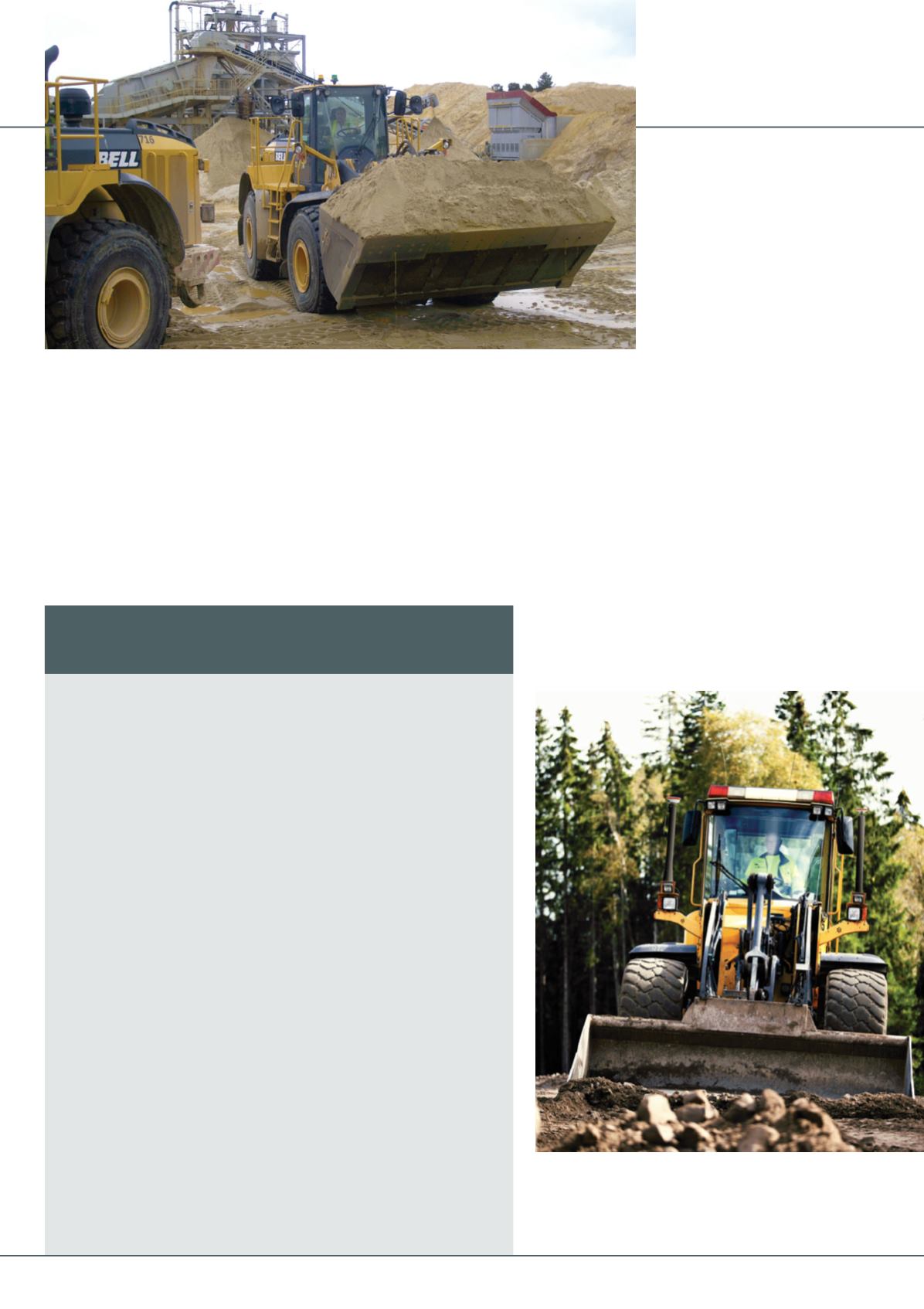
39
september 2013
international
construction
WHEELED LOADERS
Common goals
Business developments
Corporate changes among manufacturers
>
Two events this year will have an impact on the make and models of wheeled loaders
available in some parts of the world.
Atlas-Terex
Atlas Maschinen has acquired Terex’s range of five wheeled loaders, ranging in size
from 1.5 m
3
to 3 m
3
bucket capacity. Terex ceased production of the machines in April
due to the difficult economic climate and increased competition.
Atlas said it would produce the machines under both the Terex and its Kaelble/Atlas
brand. Production is set to start in the final quarter of the year at the Atlas factory in
Ganderkesee, Germany.
Atlas owner and chairman Fil Filipov, a former Terex executive, said the L160, L210,
L260, L310 models, as they will be known, complemented the Kaelble/Atlas brand’s
existing L420 and L450 models. Atlas was also previously owned by Terex, and Mr
Filipov acquired the business in 2010 from his former employer.
“I am happy that Atlas Maschinen will finally enter this important market with known
products and the well-known Kaelble brand. Combining the Kaelble large loaders will
give the distribution a respectable heavy wheeled loader line,” Mr Filipov said.
SDLG in North America
Volvo CE’s Chinese joint venture, Shandong Lingong Construction Machinery (SDLG), is
to introduce “competitively priced” wheeled loaders to the North American market.
Two models – the Tier 4-compliant, 1.8 m
3
bucket capacity LG938L and the Tier
3-compliant, 3.1 m
3
bucket capacity LG959 – will be introduced to selected dealers
before being rolled out to a wider customer base across the region in the coming
months.
SDLG’s director in North America, Al Quinn, said, “The availability of SDLG machines
in North America will provide customers with a new alternative when it comes to
purchasing their next wheeled loader.
“We believe that the SDLG value promise of high reliability in a value-priced product
will be appealing to many customers, especially those who would otherwise look at
purchasing a used machine. The brand’s arrival in North America is great news for
customers who want cost-effective machines that are durable and high quality.”
said Mr Lefévre – belies some clever
design features.
These include a cut-out areas in parts
of the boom where steel is not required
for structural strength, which Mr Lefévre said removed 500 kg
from the front-end linkage. This saving is something that can be
translated into more material in the bucket and less dead weight
being carried around.
The loader is designed to match 36 to 55 tonne haulers such as
the Cat 770, 772 and 773 rigid haulers. Mr Lefévre said it could
load the smallest of these in four passes and the largest in five to
six, but for this would need a high lift front-end to add 500 mm
to the dump height.
The new 988K for highly regulated markets meanwhile
weighs in at 52 tonnes and is designed to work with Cat’s 64
tonne capacity 775 rigid haulers. The company says its fuel
consumption is the best in class, some -20% lower than its
predecessor, the 988H. This has been achieved with a new Eco
mode and tuning the hydraulic system to give its maximum flow
at 1,400 rpm on the engine, rather than 1,800 rpm as was the
case previously.
In a similar vein, one of JCB’s latest loaders, the 467 has been
986H and 988H. The 986H is an interesting one because there is
not an equivalent model available in developed countries, while
the 988H has its counterpart, the 988K for these territories.
Caterpillar spokesman Olivier Lefévre said the 986H with its
42 tonne operating weight was designed to fill a gap between the
31 tonne 980 and 51 tonne 988 models, although it shares some
key components such as the front axle and brakes with the 988.
“There is a simple operator interface, simple technology with
less electronics, but high productivity and durability,” said Mr
Lefévre.
But simple technology for owners and operators – such as a
Z-bar linkage and simple steering wheel control, rather than
joysticks – “In lesser regulated countries people prefer a wheel,”
UK aggregates company Holme Sand
& Ballast LLP says it has increased
productivity +10% since purchasing
two new L26206E wheeled loaders
from Bell Equipment. The machines
are built in the US by John Deere and
sold in the UK under the Bell brand.
Leica has launched a 3D machine control system for
wheeled loaders in its Icon instrument range. The system
gives operators real-time cut & fill information on an in-cab
monitor, helping to get tasks done with the minimum of
passes and eliminating grade checking.


